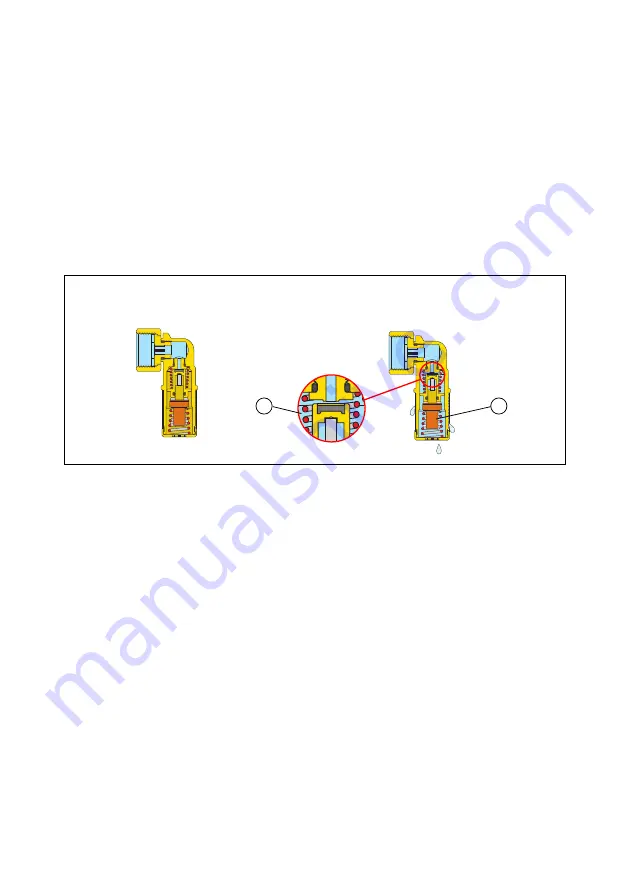
2
Operating principle
A thermostatic element (1) in contact with the ambient air controls a shut-off obturator fitted to
a passage seat in contact with the water contained in the pipe (2).
When the ambient temperature drops to the minimum intervention value, the thermostat
contracts. This causes the obturator to move and open a tiny passage so that water can drain
out, allowing a small amount of water to flow in continuously; this prevents water from freezing
inside the pipe.
Water from the supply network, which is usually warmer than the air temperature up to the
intervention value, laps the thermostat and causes the opposite action: the channel closes
again and normal circuit operating conditions are restored.
For optimal system operation without the risk of freezing, it is recommended that the part of
the circuit in which the safety device is installed is connected to the water supply network and
a suitable pressure level maintained.
Volume of water drained
While the anti-freeze device is in operation, the drain outlet will drip as a result of the cyclical
opening and closing phases taking place correctly. The amount of water drained out varies in
accordance with the outdoor temperature, the temperature of the water in the pipe and the
length of piping exposed to the air.
As a general guide, in the worst case conditions, the amount of water drained out is less than
0,5 l/h.
Anti-freeze safety device closed
Anti-freeze safety device open
1
2






















